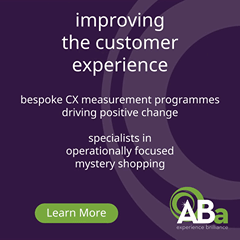Comment: Calculating the cost of complexity
When Jim McCarthy was CEO of Poundland around 2010 he took me on a visit to a number of the company’s stores in its Midlands heartland and as we traversed the aisles he could not help himself but keep reiterating that everything was a pound. “Did I tell you everything was a pound?” Yes, you did Jim, multiple times.
This mantra was not only an indication of the business’ value credentials but also that there was an underlying simplicity to the proposition. Times have changed though and it seems there has been an influx of complexity into retail businesses. From broadening out ranges to adding channels and introducing elements like digital signage it all undoubtedly brings some complexity into the operating mix. Let’s not even talk about the tech.
The value end of the market had been a bit of hold-out for keeping things simple but it seems to have fallen in line with the broader sector over recent years. Poundland under the ownership of Pepco Group has become a multi-price operation with a growing range of food lines, a clothing proposition that includes an extensive baby and kidswear collection, and the addition of an online store.
It’s a similar story with the discount food chains that were traditionally focused on a very simple proposition involving a relatively concise range of goods, ultra-efficient checkout staff, a purely stores-based model, and none of the fripperies such as in-store bakeries. As for loyalty programmes, there was a preference to simply adhere to an everyday low prices strategy.
Today my local Lidl has a bakery, rows of self-checkouts, a much more in-depth range of goods, and a Lidl Plus card is available for offers and discounts. Meanwhile at Aldi there has been an ongoing move to grab a greater average spend from customers and steal shoppers from the big grocery chains for their weekly/monthly shop. It also introduced an app delivering loyalty-type discounts. The square footage of these stores has grown over time and no doubt the supply chains have added levels of complexity in line with this upsizing.
Clearly we can describe these moves as evidence of the inevitable march of progress. To be sure, businesses cannot stand still otherwise they run the risk of getting trampled underfoot by the competition. But care has to be taken. The discounters perennially argued that there low prices were a result of their simple models. Adding complexity can eat into their low-cost business models by eroding tight margins.
For Primark holding back complexity has involved resisting opening an online store. I’ve been among the critics of the company’s strict focus on a mono-channel, store-based strategy as it lost out to online rivals including Asos, Boohoo and more recently Zara and H&M. But the former pure-plays are not the force they used to be, which validates the Primark strategy of having eschewed the online channel. In contrast, its commitment to bricks and mortar has been highlighted by the recent announcement that the company is to invest £100 million in its UK stores this year.
However, Primark has been experimenting with a click & collect offer. The fact this continues to expand across a greater range of products and is made available in a growing number of stores suggests it is proving a beneficial service to customers that also, crucially, it stacks up financially. This route to moving into the digital channel clearly makes sense for Primark and removes the complex infrastructure and processes involved with operating a full online store and associated fulfilment capabilities.
It’s far from an inevitability that the company will ultimately follow its peers and offer a full integrated, multi-channel proposition. To date it has been careful with how it has dealt with this and been cognisant of how complexity invariably comes with attached costs. Retailers should add it at their peril.














